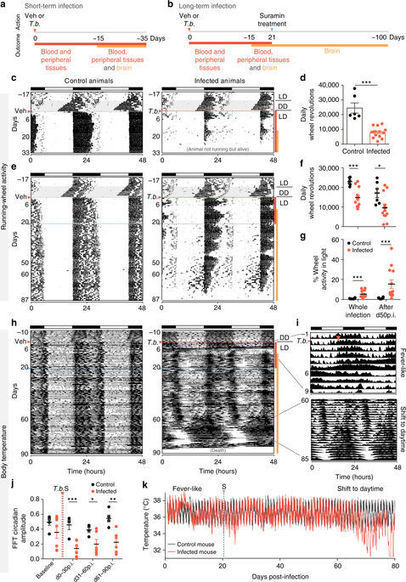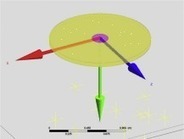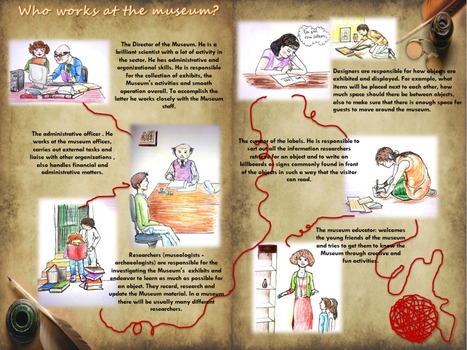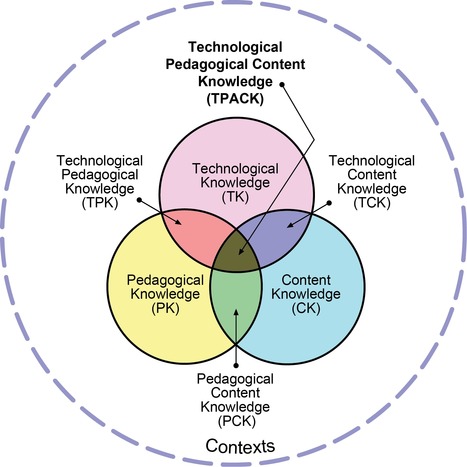 Your new post is loading...
Big Data technology has discarded traditional data modeling approaches as no longer applicable to distributed data processing. It is, however, largely recognized that Big Data impose novel challenges in data and infrastructure management.
The ubiquitousness of social media renders it a potentially powerful tool in higher education. This study explores the use of Twitter as a tool to enhance active learning and improve feedback during large-sized lectures. Students in a final-year undergraduate accounting course at an Australian university engaged in Twitter-based synchronous activities, including answering in-lecture quizzes and posting questions.
Here, we present a case study of a patient with Posterior Cortical Atrophy, who was unable to consciously perceive visual stimuli with our task parameters, yet who nevertheless still exhibited signs of multisensory enhancement even with unlearned relations between audiovisual stimuli. In a simple speeded detection task, both response speed, and the variability of reaction times, decreased in a similar manner to controls for multisensory stimuli. These results are consistent with the view that the conscious perception of stimuli and prior learning are not always a prerequisite for multisensory integration to enhance human performance.
Studies show that too much sitting, like smoking, increases the risk of heart disease, diabetes and premature death. Researchers found sedentary behavior is linked to thinning in regions of the brain that are critical to memory formation.
Epidemic strains of the bacterium Clostridium difficile have now been found to grow on unusually low levels of the food additive trehalose, providing a possible explanation for C. difficile outbreaks since 2001.
Sleeping sickness is a fatal disease caused by Trypanosoma brucei, a unicellular parasite that lives in the bloodstream and interstitial spaces of peripheral tissues and the brain. Patients have altered sleep/wake cycles, body temperature, and endocrine profiles, but the underlying causes are unknown. Here, we show that the robust circadian rhythms of mice become phase advanced upon infection, with abnormal activity occurring during the rest phase. This advanced phase is caused by shortening of the circadian period both at the behavioral level as well as at the tissue and cell level. Period shortening is T. brucei specific and independent of the host immune response, as co-culturing parasites with explants or fibroblasts also shortens the clock period, whereas malaria infection does not. We propose that T. brucei causes an advanced circadian rhythm disorder, previously associated only with mutations in clock genes, which leads to changes in the timing of sleep.
Want to learn more about Martian tsunamis or keeping fit in space? Now you can.
We aim to test whether plasma copeptin (copeptin), the C-terminal fragment of vasopressin, has predictive value of cardiovascular events in patients with type 2 diabetes without previous cardiovascular disease who were treated in primary care.
The research presented in this paper aimed to develop and validate a three-dimensional transient implicit CFD model of a typical ceiling fan available in India by comparing simulation results obtained using different URANS turbulence models with measured data collected in controlled environment. The results highlight that this ceiling fan model is able to replicate the predominant characteristics of the air flow generated by the fan such as the meandering plume and the local fine free shear layers. The best results are achieved when the SST k-ω turbulence model is used, with 83% of the simulated values being within the error bars of the respective measured value.
Currently, dramatic changes take place in terms of rapidly emerging modes of communication, technologies, increased cultural diversity, evolving workplaces cultures, new challenges for equitable education and the varying and changing identities of students everywhere. Bearing this in mind, this article draws on a design-based research study to argue of the need for museums to respond to global trends and fulfill their social and educational imperatives by investigating the potential of a particular pedagogical framework that is grounded in culturally inclusive pedagogical practices and characteristics of ubiquitous learning.
Via Andreas Christodoulou
This article aims to contribute to a better understanding of the impact of the Internet on distributed creativity. While the social mechanisms that are fundamental for creative expression are not radically different online, and while we want to avoid overly romanticizing the role of the Internet or falling prey to technological determinism, we argue that there are, nevertheless, significant shifts that must be acknowledged and examined.
This paper reports the findings of a small-scale study that documented the use of information technology for learning by a small group of postgraduate students. Our findings support current knowledge about characteristics displayed by effective e-learners, but also highlight a less researched but potentially important issue in developing e-learning expertise: the ability of students to manage the combination of learning and non-learning activities online.
This paper attempts to show how it might be possible to capture and model complex strategic processes that will help move the potential of e-learning in universities to a new stage of development. It offers the example of a four-quadrant model created as a framework for an e-learning strategy.
|
In this article, we argue that tabletop games provide a helpful means of rethinking the affordances of digital games in pedagogy. We argue that tabletop games offer a distinctive technology from digital games in exploring the idea of play as experience, providing a sociable, accessible and tactile platform that can easily be adapted by players to suit their needs.
In this chapter complementary theoretical perspectives are elaborated. The theory of technological mediation studies the teacher-technology relationship and accentuates the material dimensions of technology integration. This theory postulates that teachers and technology constitute each other. The theory of situated cognition features the social dimensions technology integration and premises that teachers actively construct their TPACK through experiences in practice. We argue that both social and the material dimensions are needed when teaching is considered a design science. If teachers take the designer’s role and design and enact technology environments for learning they develop their TPACK, in particular when they do so collaboratively.
Networking plays an important role in research projects to build a community and audience around a research area. Using social media is popular in project communication as it provides the ability to engage with a group of followers daily. Such online networking tools provide the advantage of providing near-realtime data, which can be used to evaluate communication and networking success. This does, however, present a problem of what data can be collected in a reasonable timeframe to usefully feed back into the project’s strategies. This paper presents the evaluation approach the Research on Open Educational Resources for Development in the Global South (ROER4D) project has applied to understanding the project’s reach and engagement on the social networking site Twitter.
The potential influence of Massive Open Online Courses (MOOCs) on higher education institutions is much discussed and debated, with some arguing that MOOCs are a disruptive innovation that will radically change existing models of higher education. However, analyses of whether and how MOOCs might disrupt higher education models are relatively scarce. This paper analyses whether MOOCs should be considered a disruptive innovation according to the concept’s defining criteria. It compares characteristics of disruptive innovation with current developments in MOOCs, suggesting three perspectives – performance, benefits, and market – that can be used as a lens and analytic framework to explore and evaluate current practice. The findings indicate that MOOCs do not match all the characteristics of disruptive innovation as they are commonly identified in the literature. However, MOOCs may be a sustaining innovation that establishes new markets for learners who are not served by universities.
Cancer cell dissemination during very early stages of breast cancer proceeds through poorly understood mechanisms. Here we show, in a mouse model of HER2+ breast cancer, that a previously described sub-population of early-evolved cancer cells requires macrophages for early dissemination. Depletion of macrophages specifically during pre-malignant stages reduces early dissemination and also results in reduced metastatic burden at end stages of cancer progression. Mechanistically, we show that, in pre-malignant lesions, CCL2 produced by cancer cells and myeloid cells attracts CD206+/Tie2+ macrophages and induces Wnt-1 upregulation that in turn downregulates E-cadherin junctions in the HER2+ early cancer cells. We also observe macrophage-containing tumor microenvironments of metastasis structures in the pre-malignant lesions that can operate as portals for intravasation. These data support a causal role for macrophages in early dissemination that affects long-term metastasis development much later in cancer progression. A pilot analysis on human specimens revealed intra-epithelial macrophages and loss of E-cadherin junctions in ductal carcinoma in situ, supporting a potential clinical relevance.
Less than half of anthropogenic carbon dioxide emissions remain in the atmosphere. While carbon balance models imply large carbon uptake in tropical forests, direct on-the-ground observations are still lacking in Southeast Asia. Here, using long-term plot monitoring records of up to half a century, we find that intact forests in Borneo gained 0.43 Mg C ha−1 per year (95% CI 0.14–0.72, mean period 1988–2010) above-ground live biomass. These results closely match those from African and Amazonian plot networks, suggesting that the world’s remaining intact tropical forests are now en masse out-of-equilibrium. Although both pan-tropical and long-term, the sink in remaining intact forests appears vulnerable to climate and land use changes. Across Borneo the 1997–1998 El Niño drought temporarily halted the carbon sink by increasing tree mortality, while fragmentation persistently offset the sink and turned many edge-affected forests into a carbon source to the atmosphere.
The single most effective action that parents and caregivers can take to lower a baby's risk of SIDS is to place the baby to sleep on his or her back for naps and at night.
The Education and Training Monitor is an instrument to foster and encourage evidence-based policy making.
Increased consumption of caffeinated coffee and, to a lesser extent, decaffeinated coffee are associated with reduced risk of HCC, including in pre-existing liver disease. These findings are important given the increasing incidence of HCC globally and its poor prognosis.
This paper uses a case study of the drawings, early writings and imaginative role play of two children to illustrate how children use a variety of modes to make meaning in ways that are creative and beyond the design and expectation of adults. It aims to valorise the kinds of practices in which children routinely engage but which are often overlooked and de-valued by adults, both parents and teachers.
In Nature Energy this week, researchers report a technique that uses natural light to generate hydrogen from biomass. The hydrogen is free of fuel-cell inhibitors, such as carbon monoxide, which allows it to be used for power.
Many educators advocate, promote and encourage the dreams of agency, control, ownership and choice amongst students whilst educational institutions take the responsibility for provision, equity, access, participation and standards. The institutions traditionally procure, provide and control the technology for learning but now students are acquiring their own personal technologies for learning and institutions are challenged to keep pace. These allow students to produce, store, transmit and consume information, images and ideas; this potentially realises the educators’ dream but for institutions is potentially a nightmare, one of loss of control and loss of the quality, consistency, uniformity and stability that delivered the dreams of equity, access and participation. This paper traces the conflicting dreams and responsibilities.
|
 Your new post is loading...
Your new post is loading...







































In the evolving reality of big data and consequent advances in big data technology, a claim has been made that traditional data modeling approaches are no longer feasible to distributed data processing.
Nevertheless, the authors in this paper conclude based on their literature review, that methods, principles, and perspectives created as part of Data Semantics researchers have significant contributions to make for Big Data Challenges.